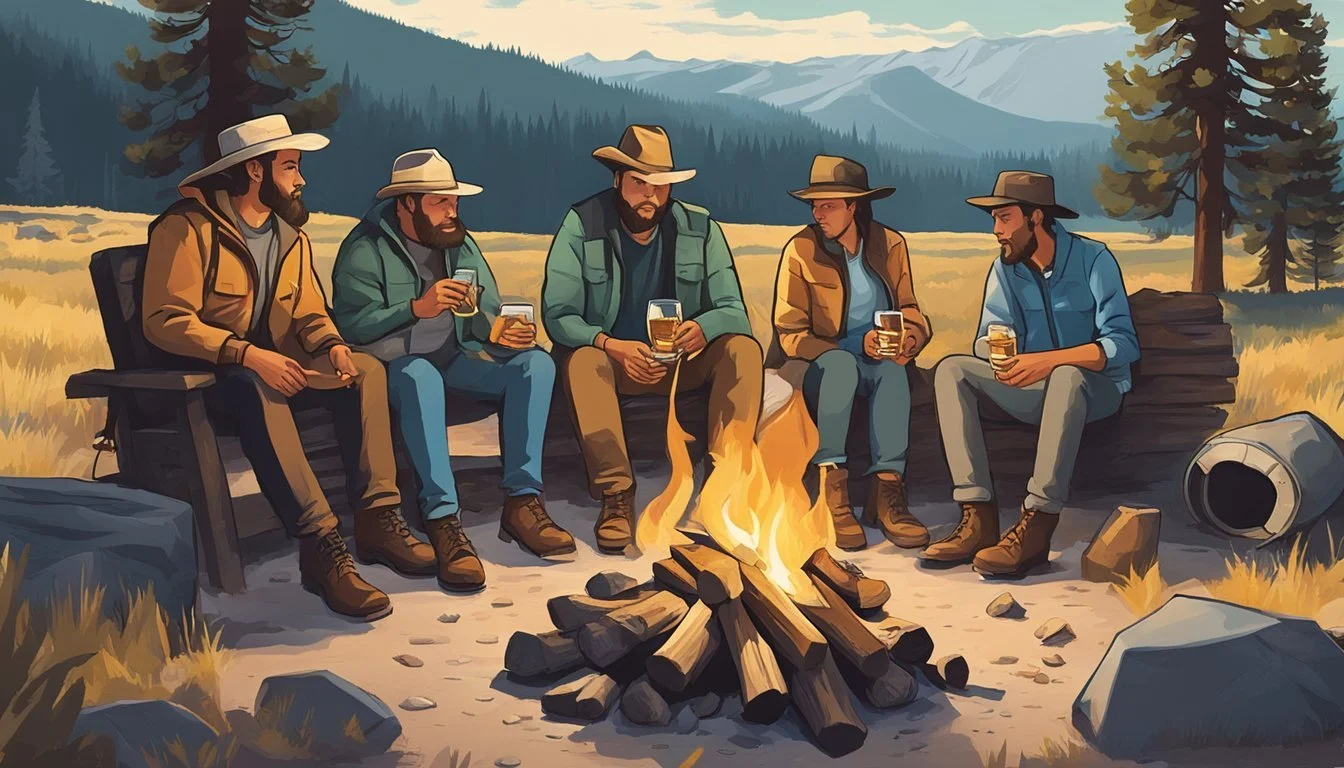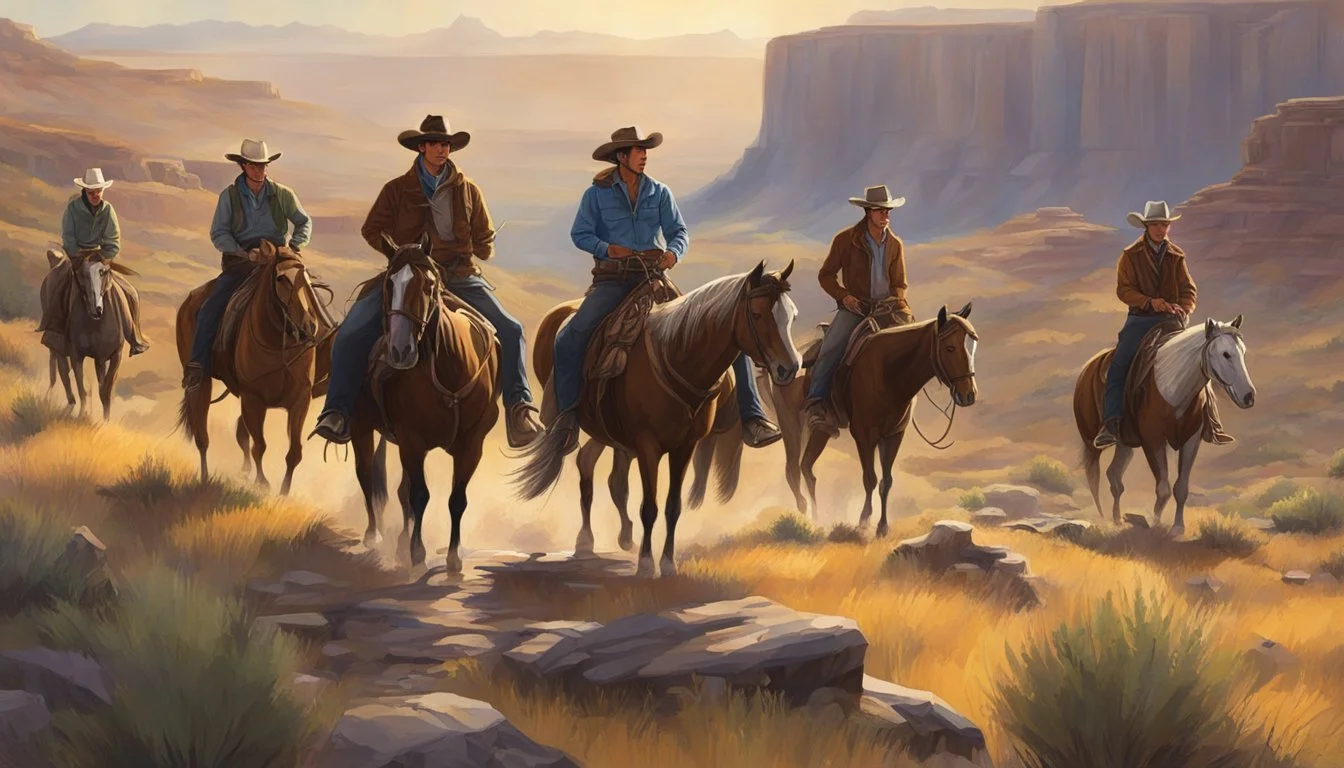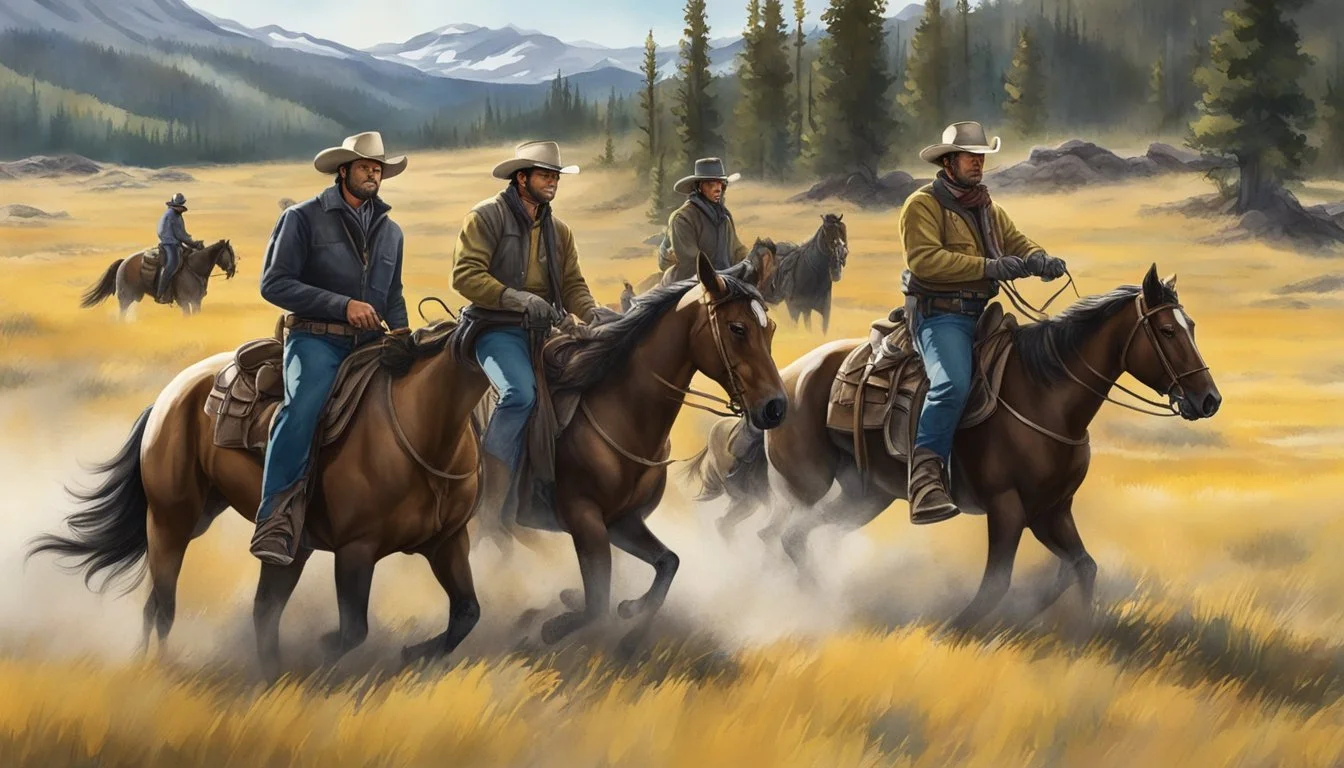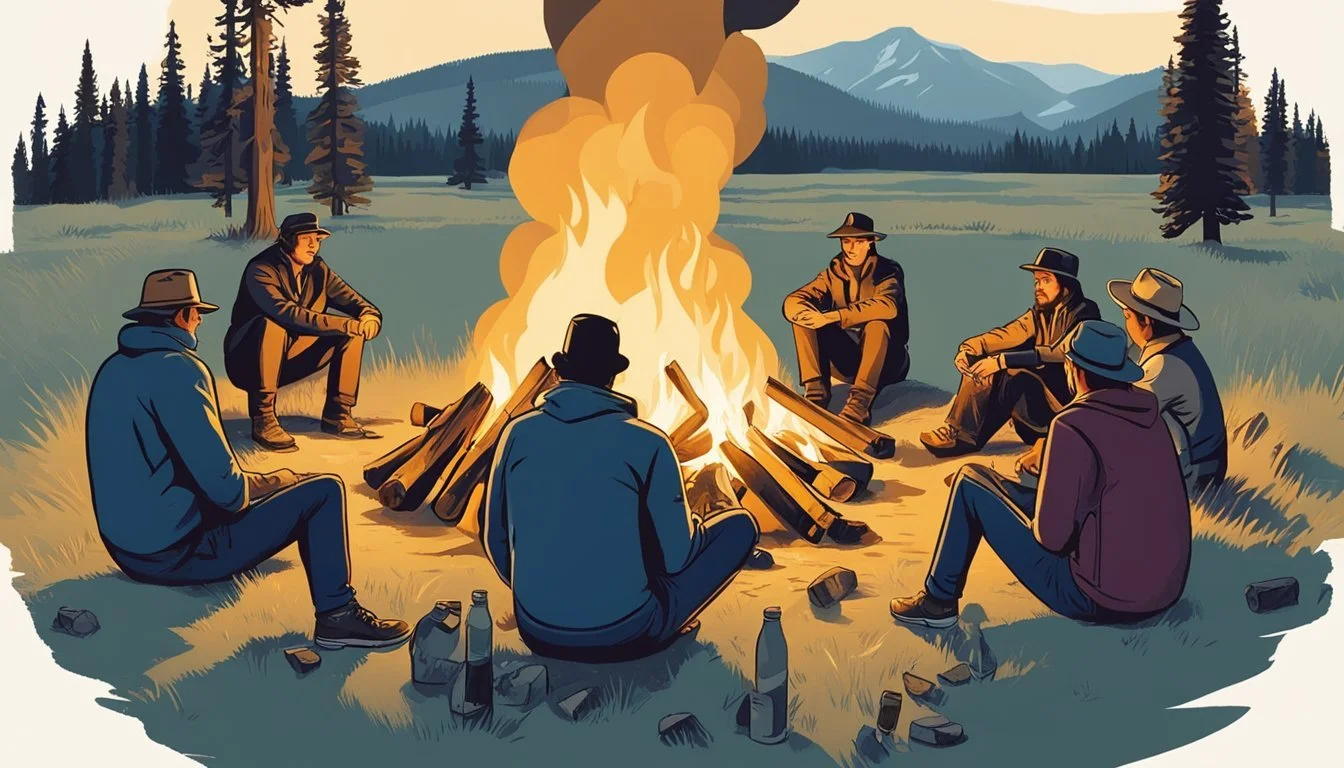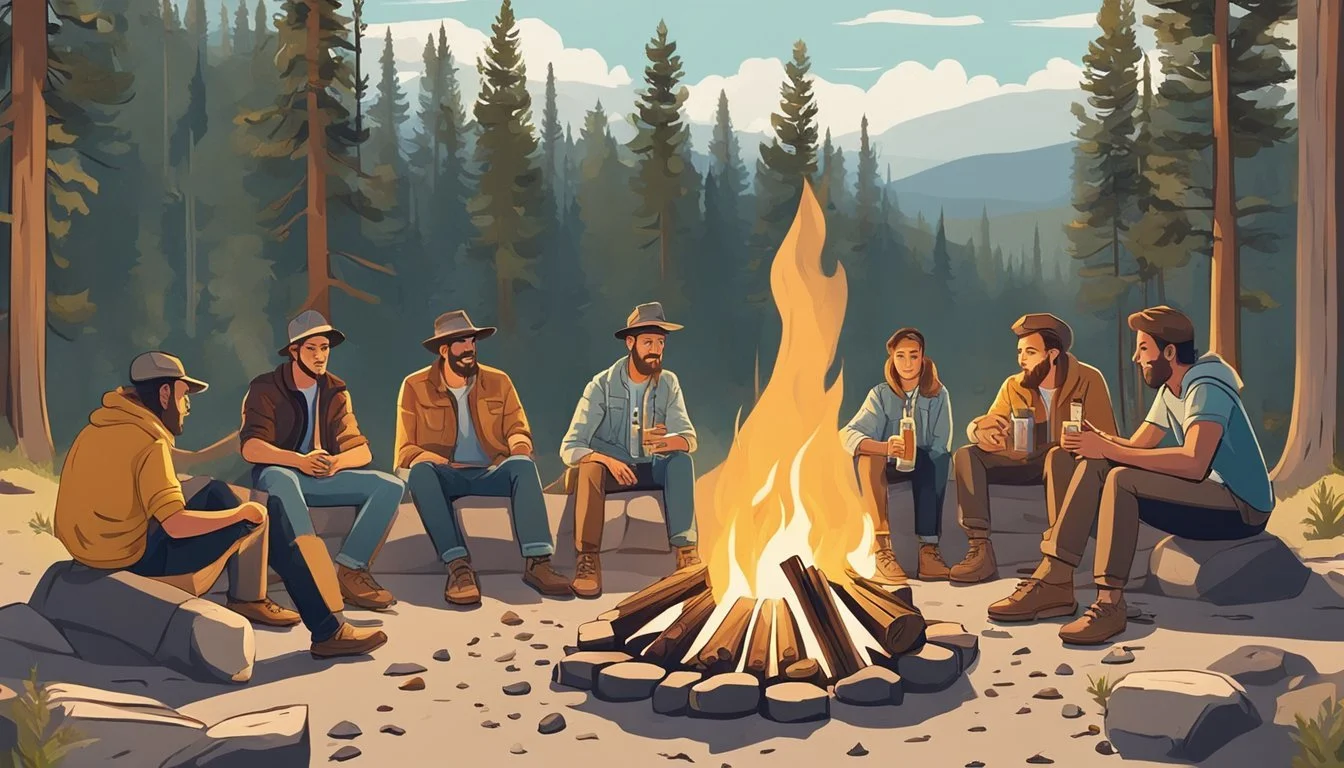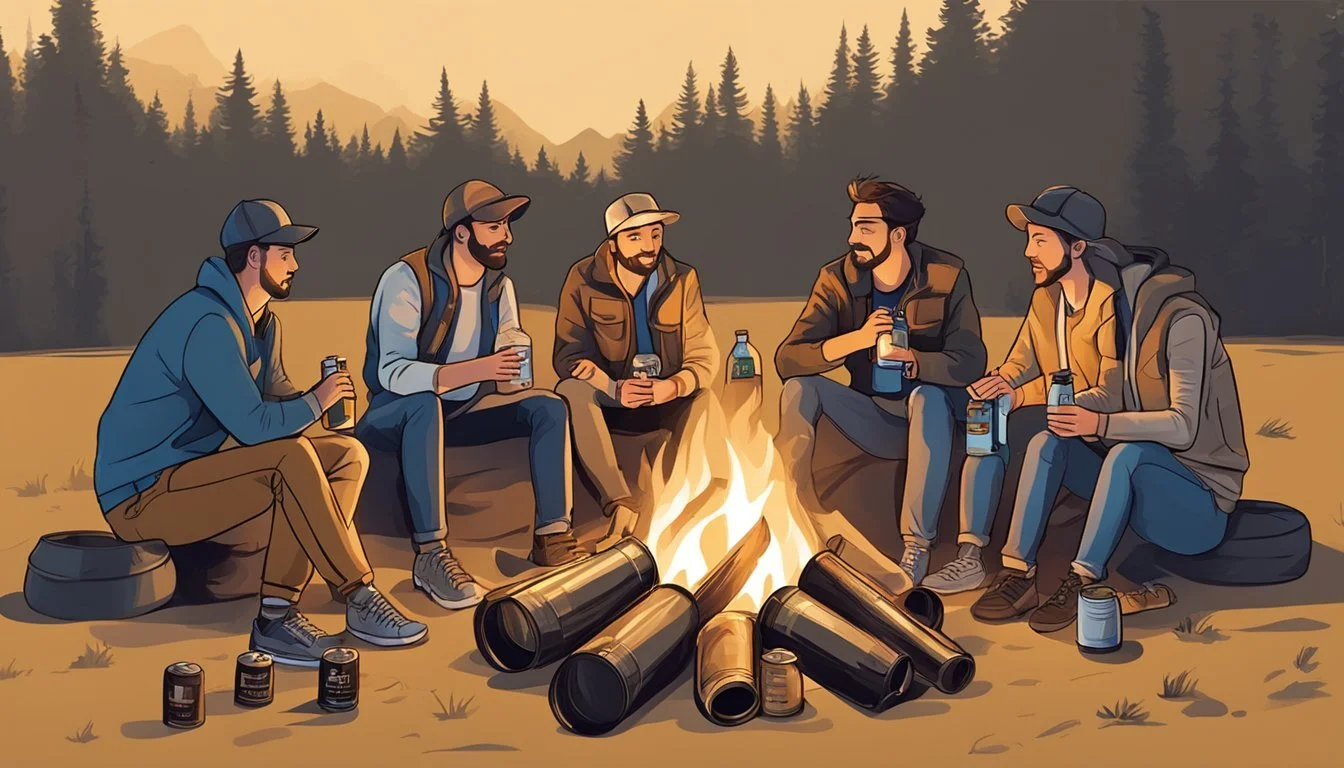Yellowstone's Dark Side Unveiled: Alcohol's Grip on America's Iconic Landscape
Alcohol plays a significant role in the cultural landscape of Yellowstone, both on-screen and in the real-world context it portrays. The show's depiction of drinking habits reflects deeply ingrained societal norms and expectations surrounding alcohol consumption in rural American communities. These cultural attitudes toward alcohol often clash with public health concerns, highlighting the complex relationship between tradition, identity, and substance use.
The prevalence of alcohol in Yellowstone serves as a lens through which viewers can examine broader societal issues. Characters frequently turn to drinking as a coping mechanism, mirroring real-world behaviors and sparking conversations about mental health and addiction. This portrayal resonates with many viewers, contributing to the show's cultural impact and popularity.
Yellowstone's exploration of alcohol use also sheds light on the challenges faced by public health initiatives in regions where drinking is deeply woven into the social fabric. The show presents an opportunity to reflect on how cultural norms can both perpetuate and resist efforts to address alcohol-related problems in society.
Cultural Influences on Drinking Patterns
Alcohol consumption in Yellowstone is shaped by historical, cultural, and social factors. These influences create distinct drinking patterns and behaviors among residents and visitors to the park.
Historical Context of Alcohol in Yellowstone
Alcohol has played a significant role in Yellowstone since its establishment as the first national park. Early explorers and tourists often brought spirits on their expeditions. In the late 1800s, saloons sprang up near park entrances to serve thirsty travelers.
Prohibition in the 1920s led to bootlegging operations within park boundaries. After repeal, the National Park Service strictly regulated alcohol sales. Today, numerous bars and restaurants in Yellowstone serve alcohol, but with greater oversight.
The park's rugged frontier image has long been associated with drinking culture. This historical link continues to influence modern attitudes toward alcohol consumption in Yellowstone.
Cultural Norms and Drinking Behavior
Yellowstone's unique cultural environment impacts drinking patterns. The park attracts a diverse mix of visitors, employees, and local residents, each bringing their own cultural norms around alcohol use.
Some key cultural factors influencing drinking behavior in Yellowstone include:
Outdoor recreation culture
Western "cowboy" image
Tourism and vacation mentality
Park employee subculture
These cultural elements can promote social drinking as part of the Yellowstone experience. However, they may also lead to excessive consumption in some cases.
Park policies aim to balance allowing responsible alcohol use with maintaining a family-friendly environment. This reflects broader cultural shifts toward moderation.
Social Norms and Alcohol Use
Social norms strongly shape alcohol consumption patterns in Yellowstone. Peer influence and group dynamics often dictate drinking behaviors, especially among younger visitors and seasonal workers.
Common social norms around alcohol in the park include:
Drinking as a way to socialize and make friends
Alcohol use during outdoor activities
Higher acceptance of drinking in certain settings (e.g. campgrounds)
Pressure to participate in drinking activities
These norms can create an environment where heavy drinking is viewed as normal or expected. However, growing awareness of alcohol-related issues has led to some shifts in social attitudes.
Educational efforts by the park service aim to promote more responsible drinking norms among visitors and staff. This reflects broader societal trends toward healthier relationships with alcohol.
Economic and Marketing Factors
Alcohol plays a significant economic role in Yellowstone, influenced by industry marketing and socioeconomic factors. These elements shape consumption patterns and cultural norms around drinking in the region.
Alcohol Industry and Marketing Strategies
The alcohol industry employs targeted marketing strategies in Yellowstone to boost sales and brand recognition. Local breweries and distilleries promote their products as authentic "Yellowstone experiences," appealing to tourists seeking unique regional flavors.
National brands also capitalize on the park's popularity, featuring Yellowstone imagery in their advertisements. These tactics create associations between alcohol consumption and outdoor adventure.
Social media campaigns highlight drinking as a key part of the Yellowstone vacation experience. Influencers often showcase alcoholic beverages against scenic backdrops, further normalizing drinking in the park setting.
The Impact of Socioeconomic Status
Socioeconomic status significantly influences alcohol consumption patterns in Yellowstone. Higher-income visitors tend to purchase premium craft beers and spirits, viewing them as part of an upscale park experience.
Lower-income groups may opt for cheaper, mass-produced options. This disparity can reinforce social divisions and stereotypes about drinking habits.
Economic factors also affect local residents' relationship with alcohol. In communities near the park, limited job opportunities and seasonal employment instability can contribute to higher rates of alcohol misuse as a coping mechanism.
Alcohol pricing policies impact consumption across socioeconomic groups. Higher taxes on alcoholic beverages may reduce overall consumption but can disproportionately affect lower-income individuals.
Social Influences and Peer Dynamics
Alcohol consumption in Yellowstone is deeply intertwined with social influences and peer dynamics. These factors shape drinking behaviors and attitudes among visitors and residents alike.
Peer Influence on Drinking Habits
Peer pressure plays a significant role in alcohol consumption patterns at Yellowstone. Visitors often feel compelled to drink to fit in with their travel companions or fellow tourists. This influence is particularly strong among younger adults and college students visiting the park.
Social norms within friend groups can normalize excessive drinking. For example, a group might establish an unspoken rule of starting happy hour early while on vacation. These norms can lead to increased alcohol intake and risky behaviors.
Peer influence extends to drinking games and challenges, which are common in social settings at Yellowstone. These activities often encourage rapid or excessive consumption, potentially leading to dangerous situations in the park's natural environment.
Role of Social Media and Advertising
Social media platforms significantly impact drinking culture in Yellowstone. Visitors frequently share photos of themselves enjoying alcoholic beverages against scenic backdrops, inadvertently promoting drinking as an essential part of the Yellowstone experience.
Hashtags like #YellowstoneHappyHour or #DrinkingInNature gain popularity, further normalizing alcohol consumption in the park. These online trends can influence visitors' expectations and behaviors during their trips.
Alcohol brands leverage Yellowstone's popularity in their marketing strategies. Advertisements featuring rugged landscapes and outdoor activities subtly link drinking with adventure, potentially encouraging visitors to incorporate alcohol into their park experience.
Alcohol Consumption in Various Social Groups
Different social groups exhibit distinct drinking patterns in Yellowstone. Families with children tend to moderate their alcohol intake, prioritizing safety and setting a positive example. However, some parents may relax their usual drinking limits while on vacation.
Young adults and college students often engage in heavier drinking, viewing their Yellowstone trip as a time for celebration and relaxation. This group is more likely to participate in party-like atmospheres at campgrounds or lodges.
Outdoor enthusiasts and nature lovers typically show more restraint in their alcohol consumption. They often prioritize early morning activities and physical fitness, which can curb excessive drinking. However, some may indulge in celebratory drinks after completing challenging hikes or outdoor adventures.
Public Health and Societal Issues
Alcohol consumption in Yellowstone raises significant public health concerns and has far-reaching societal impacts. Addressing these issues requires targeted prevention and education efforts.
Public Health Concerns Linked to Alcohol
Excessive alcohol use in Yellowstone poses serious health risks. Liver disease, cardiovascular problems, and increased cancer risk are common long-term effects. Short-term dangers include alcohol poisoning, injuries from falls or accidents, and impaired judgment leading to risky behaviors.
Alcoholism rates in the region exceed national averages. This chronic disease strains local healthcare systems and impacts families. Mental health issues often co-occur with alcohol use disorders, complicating treatment.
Drunk driving remains a major public safety threat on Yellowstone's roads. Alcohol-related traffic accidents cause injuries, fatalities, and property damage each year.
Societal Impact of Excessive Alcohol Use
Alcohol abuse disrupts families and communities in Yellowstone. Domestic violence incidents spike during peak tourist seasons when alcohol consumption increases. Child neglect cases often involve parental alcohol misuse.
Workplace productivity suffers due to alcohol-related absenteeism and decreased performance. This economic impact affects local businesses and the tourism industry.
Alcohol-fueled public disturbances strain law enforcement resources. Disorderly conduct and property damage incidents rise in areas with high concentrations of bars and liquor stores.
Prevention and Education Strategies
Public health campaigns in Yellowstone focus on responsible drinking. These initiatives promote moderation and highlight the risks of excessive alcohol use. Targeted messaging addresses high-risk groups like young adults and seasonal workers.
School-based programs educate youth about alcohol's effects on developing brains. These efforts aim to delay the onset of drinking and reduce binge drinking among teens.
Community coalitions work to change local alcohol norms. They advocate for policies limiting alcohol availability and support alcohol-free events and activities.
Healthcare providers screen patients for alcohol use disorders and offer brief interventions. Treatment options include counseling, support groups, and rehabilitation programs tailored to the unique needs of Yellowstone residents and visitors.
Demographics and Drinking Norms
Alcohol consumption patterns in Yellowstone vary significantly across different demographic groups. Cultural norms and societal expectations shape drinking behaviors among youth, women, and minority communities.
Youth Drinking and Societal Expectations
Young people in Yellowstone face unique pressures regarding alcohol use. Peer influence plays a crucial role in shaping youth drinking habits. Many teens perceive alcohol consumption as a rite of passage into adulthood.
Social media and popular culture often glamorize drinking, leading to increased experimentation among youth. Local prevention programs aim to educate teenagers about the risks of underage drinking.
Parents' attitudes toward alcohol significantly impact youth behavior. Families with more permissive views tend to have children who start drinking earlier.
Women's Drinking Patterns and Challenges
Women in Yellowstone encounter distinct issues related to alcohol consumption. Societal expectations often stigmatize female drinking more harshly than male drinking.
Biological differences affect how women process alcohol, leading to increased health risks. Pregnant women face strong social pressure to abstain completely from alcohol use.
Marketing strategies increasingly target female consumers, promoting "mommy wine culture" and normalizing daily drinking habits. This trend raises concerns about long-term health impacts on women.
Minority Communities and Alcohol Norms
Alcohol norms vary widely among Yellowstone's diverse minority communities. Cultural traditions and religious beliefs significantly influence drinking patterns.
Some ethnic groups have lower overall rates of alcohol consumption due to cultural taboos. Others face higher risks of alcohol-related problems stemming from historical trauma and socioeconomic factors.
Language barriers and cultural stigma can limit access to alcohol treatment services for minority populations. Community-based programs tailored to specific cultural needs have shown promise in addressing these challenges.
Efforts to reduce alcohol-related harm must consider the unique perspectives and experiences of different minority groups in Yellowstone.
Legal and Regulatory Perspectives
Yellowstone's approach to alcohol regulation balances legal requirements with community norms. Policies aim to mitigate alcohol-related issues while respecting local drinking customs.
Alcohol Policies and Community Norms
Yellowstone implements alcohol policies that reflect federal and state laws. These include age restrictions, limiting sales hours, and prohibiting open containers in certain areas.
Local community norms also shape alcohol regulation. Many residents view moderate drinking as socially acceptable, influencing enforcement practices.
Public education campaigns raise awareness about responsible consumption. These efforts target both visitors and residents to promote safer drinking habits.
Seasonal fluctuations in tourism impact policy enforcement. During peak seasons, authorities may increase patrols and checkpoints to manage alcohol-related incidents.
Regulation of Alcohol Outlets and Public Spaces
Yellowstone strictly regulates alcohol outlets within park boundaries. Licenses for bars and restaurants are limited to control density and prevent oversaturation.
Operating hours for alcohol sales are restricted, particularly in campgrounds and picnic areas. This helps reduce noise and disorderly conduct at night.
Public spaces have designated alcohol-free zones, including certain hiking trails and wildlife viewing areas. These measures aim to enhance visitor safety and protect natural resources.
Park rangers conduct regular inspections of licensed establishments to ensure compliance with regulations. Violations can result in fines or license revocation.
Special event permits for alcohol service undergo rigorous review. Organizers must demonstrate adequate security and safety measures to obtain approval.
Consequences and Risks of Alcohol Misuse
Alcohol misuse poses significant dangers to individual and public health. It contributes to numerous medical conditions, mental health disorders, and social problems. Understanding these risks is crucial for developing effective prevention and intervention strategies.
Health Complications and Mortality
Excessive alcohol consumption can lead to severe health issues. It damages vital organs like the liver, heart, and pancreas. Chronic heavy drinking often results in liver cirrhosis, a potentially fatal condition.
Alcohol abuse increases the risk of certain cancers, including those of the mouth, throat, and esophagus. It can also raise blood pressure, leading to cardiovascular problems.
In 2012, alcohol misuse was responsible for 3.3 million deaths globally. This staggering figure represents 6% of all deaths worldwide that year.
Alcohol-related accidents and injuries are another major concern. Impaired judgment and coordination contribute to falls, drownings, and vehicle crashes.
Alcohol Dependence and Mental Health
Prolonged alcohol misuse can lead to dependence and addiction. This condition alters brain chemistry, making it difficult for individuals to control their drinking habits.
Alcohol abuse often co-occurs with mental health disorders. It can exacerbate symptoms of depression, anxiety, and bipolar disorder. In some cases, it may trigger the onset of these conditions.
Alcohol dependence can strain relationships, affect work performance, and lead to financial difficulties. These social consequences can further impact mental well-being, creating a cycle of abuse and distress.
Risk Factors and Protective Behaviors
Several factors influence an individual's likelihood of developing alcohol-related problems:
Genetic predisposition
Early onset of drinking
Trauma or stress
Social and cultural norms
Protective behaviors can help mitigate these risks:
Limiting alcohol intake
Avoiding binge drinking
Seeking support when needed
Education about safe drinking practices is crucial. Understanding personal limits and recognizing warning signs of abuse can prevent long-term consequences.
Implementing community-based prevention programs can also reduce alcohol-related harm. These initiatives often focus on changing social norms and providing alternatives to drinking.
Conclusion
Alcohol plays a complex role in Yellowstone's culture and society. Its presence intertwines with local traditions, tourism, and social norms. Responsible drinking practices are crucial for maintaining safety in the park's unique environment.
Societal factors shape alcohol consumption patterns among visitors and residents. Cultural backgrounds and expectations influence drinking behaviors. Education and awareness programs can help mitigate potential risks associated with alcohol use in Yellowstone.
Park authorities face ongoing challenges in balancing alcohol availability with visitor safety. Implementing effective policies requires consideration of diverse stakeholder perspectives. Collaboration between park management, local businesses, and community organizations is essential.
Efforts to promote responsible drinking continue to evolve. Public information campaigns highlight the importance of moderation and awareness of environmental hazards. Ranger-led programs educate visitors about alcohol's effects at high altitudes.
Addressing alcohol-related issues in Yellowstone necessitates a multifaceted approach. Ongoing research and community engagement inform evidence-based strategies. By fostering a culture of responsibility, Yellowstone can preserve its natural beauty while accommodating diverse visitor experiences.

